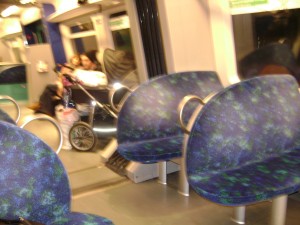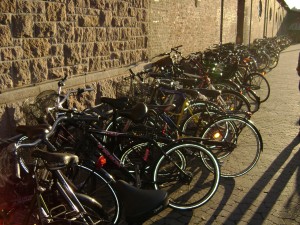What does the future of environmental sustainability look like? Having grown up in the city of Los Angeles, I became accustomed to a driving culture where traffic and smog were a way of life. During my teenage years, I had the opportunity to travel to cities in Europe like Paris and Brussels, cities in the South Pacific like Sydney and Auckland, as well as Rio De Janeiro in Brazil. In these cities as well as my trips to the eastern United States, I saw for the first time clean and reliable transportation, which led me to draw the conclusion that as long as public transportation is efficient people will ride.

Clean Public Transportation
Although public transportation is a crucial component to environmental sustainability, in Copenhagen I have discovered an environmental sustainability that far exceeds anything I have ever seen. Firstly, public transportation (as this picture indicates)

Personal Bikes Outside of the Metro Station
is clean and reliable, which encourages the Danish to use it. Beyond that, people in Copenhagen have taken the initiative to buy bicycles and regularly ride them despite weather conditions. This willingness to bicycle miles to work instead of drive or take public transport shows an environmental mindset in the Danish.
Additionally, both restaurants and stores seem to discourage wastefulness. For instance, I have found many restaurants that charge the equivalent of $2 US Dollars for water and $1 US Dollar for a grocery bag at the grocery store. Although these are both small amounts, they have discouraged me from consuming excess items and I’m sure they have had the same effect on others. Despite the fact that I am no expert on Danish policy or Copenhagen, it goes without saying that these efforts are worthy of acknowledgement. It is my hope that people attending the United Nations Climate Change Conference in Copenhagen will notice these efforts and apply them in their native country. Through small steps like these, we can hopefully begin the process of environmental sustainability.